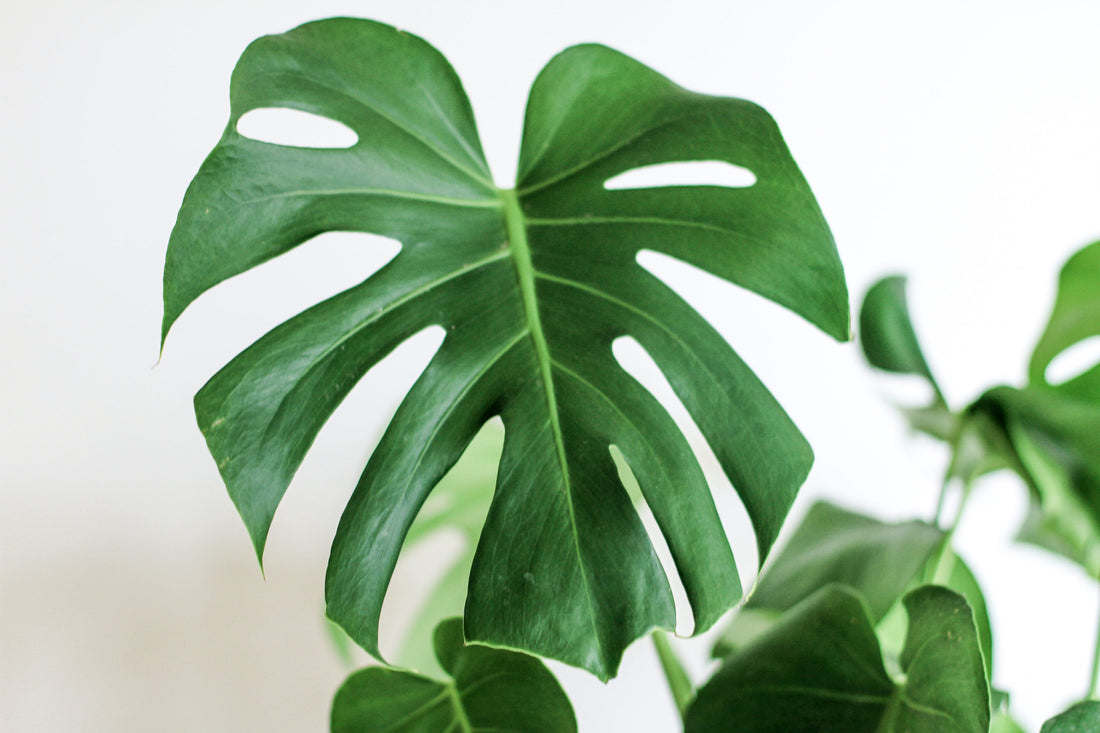
Plants 101
The Hole Truth: Monsteras
Big or small, prickly or smooth, a plant’s characteristics makes them beautiful and unique. They way they look can tell us a lot about them. Here, a closer look at Monsteras and their leaf holes.

What Is A Monstera?
Monsteras are a species of evergreen tropical vines or shrubs that are native to Central America. Part of Araceae, the aroid family, they are one of a few aroids that produce edible fruit, particularly, Monstera deliciosa. However, they rarely flower or produce edible fruit indoors.
Two different species of Monstera are cultivated as houseplants - Monstera deliciosa and Monstera adansonii. Monstera adansonii is distinguished from M. deliciosa by having longer, tapering leaves, as well as having completely enclosed leaf holes. Monstera deliciosa leaf holes eventually grow towards the edge and open up as they mature.

Why Do Monsteras Have Holes?
Monsteras are famous for their natural leaf holes, hence the nickname "Swiss Cheese Plant". The technical term for plants making holes or clear parts in their leaves is called “leaf fenestration”, and is not unique to monsteras. Plants such as Haworthias and Lithops have developed leaf fenestrations for other reasons—their leaf tips are transparent to allow light down into the plants when they are buried by the frequent sand and dust storms of their native South Africa.
There has been debate and speculation as to how and why monsteras make leaf holes. Some have suggested that Monsteras create holes in their leaves to resist the strong winds of hurricanes. Bird of Paradise plants split their leaves to allow wind through as well. Others suggest that they have the holes that better allow water to come in contact with their roots. After all, as they grow, they are epiphytic and do not have much contact with the soil.
You might say the ‘hole theories’ have holes in them—there is not enough evidence to support an entire adaptation. If the adaptation was to resist hurricane winds, then most, if not all tropical plants would have the same or similar adaptations. Instead, many tropical plants have full leaves that are not prone to breaking. Although water may indeed reach the roots more easily through the holes, there is no need. Monsteras are native to tropical rainforests where it rains almost every day. There is enough water to reach the roots at some point. If it’s not wind or or water, then why else would Monsteras make holes?
The current leading theory comes to us from Christopher Muir, at Indiana University who suggests that it is because of lighting conditions that Monsteras have developed holes. Monsteras grow from the forest floor in a semi-epiphytic way, vining up trees and such to acquire more light. As it is in such forests, the only way that understory plants can survive is by capturing sun-flecks, or small beams of sunlight that make it through the canopy. By modifying the leaf structure to have holes, the same area of leaf can cover a greater area. So, even though a few sun flecks may go through the holes and be missed, the probability/incidence of catching a sunfleck increases because there is more area covered.
Given good lighting conditions, a whole leaf and a fenestrated leaf will perform the same. It is under scattered light sunflecks/understory conditions that the fenestrated leaf does pick up more sunlight than a whole leaf. However, this is only advantageous if the plant’s growth rate demands it. Because more mature monsteras grow more quickly, it becomes advantageous to utilize all the sunflecks as efficiently as possible.
Make Your Monstera Holey
Now knowing what purpose holes serve, or at least the why, let’s discover how to facilitate fenestration in your monstera. A holey leaf is a defining quality, and should be sought out. Just...let it grow. Monsteras make fenestrated leaves with age and size. Like other aroids, leaf morphology (shape) changes with the age of the plant. When they are young, Monsteras leaves are similar to other aroids, i.e., like the heart-shaped green leaves of the Philodendron. When Monsteras reach a span of about three feet, fenestration begins, meaning they start to grow new leaves with holes. We have found that if you trim off the older, smaller leaves which are come from the base, this will encourage the plant to produce larger leaves, and facilitate fenestration. Try it out!

Words By The Sill
Empowering all people to be plant people—a collection of articles from The Sill's team of plant experts across a variety of plant care topics to inspire confidence in the next generation of plant parents. Welcome to Plant Parenthood™.
Do Some Plant Shopping